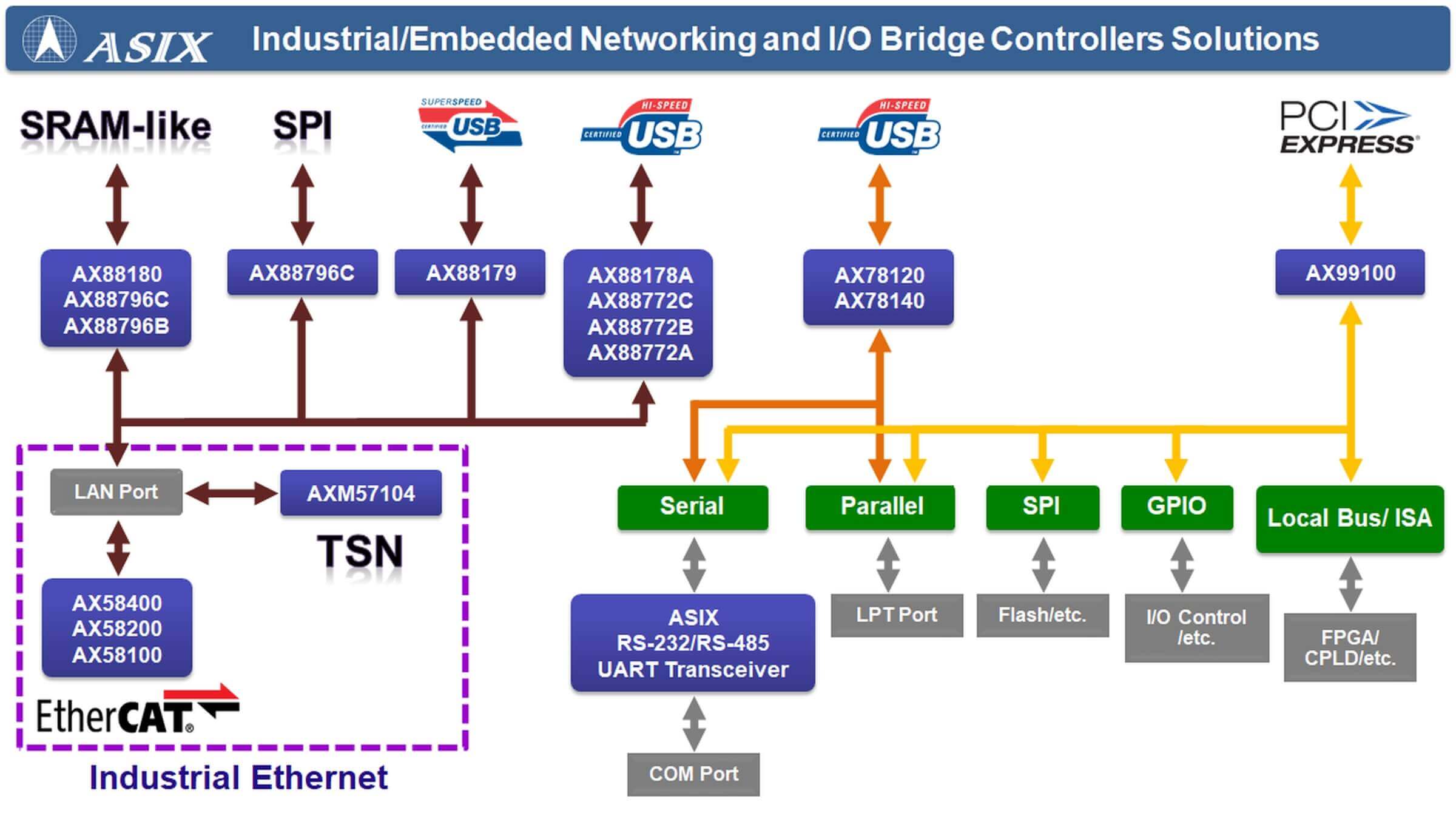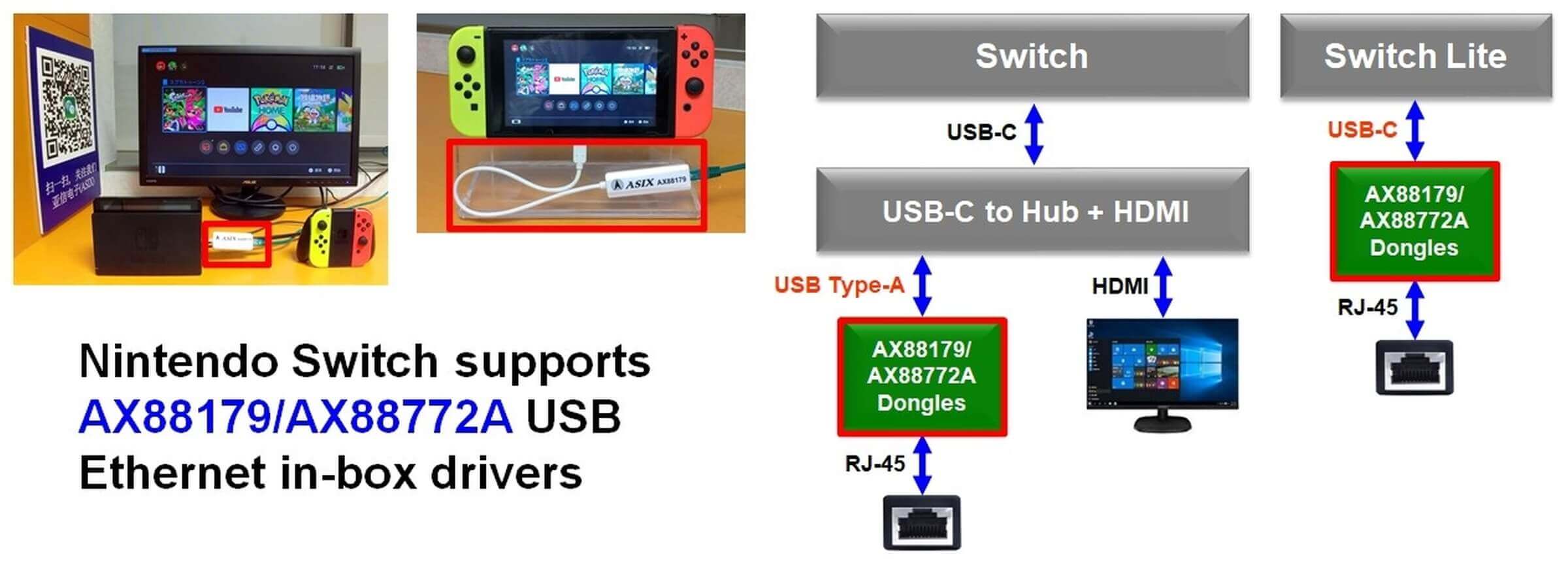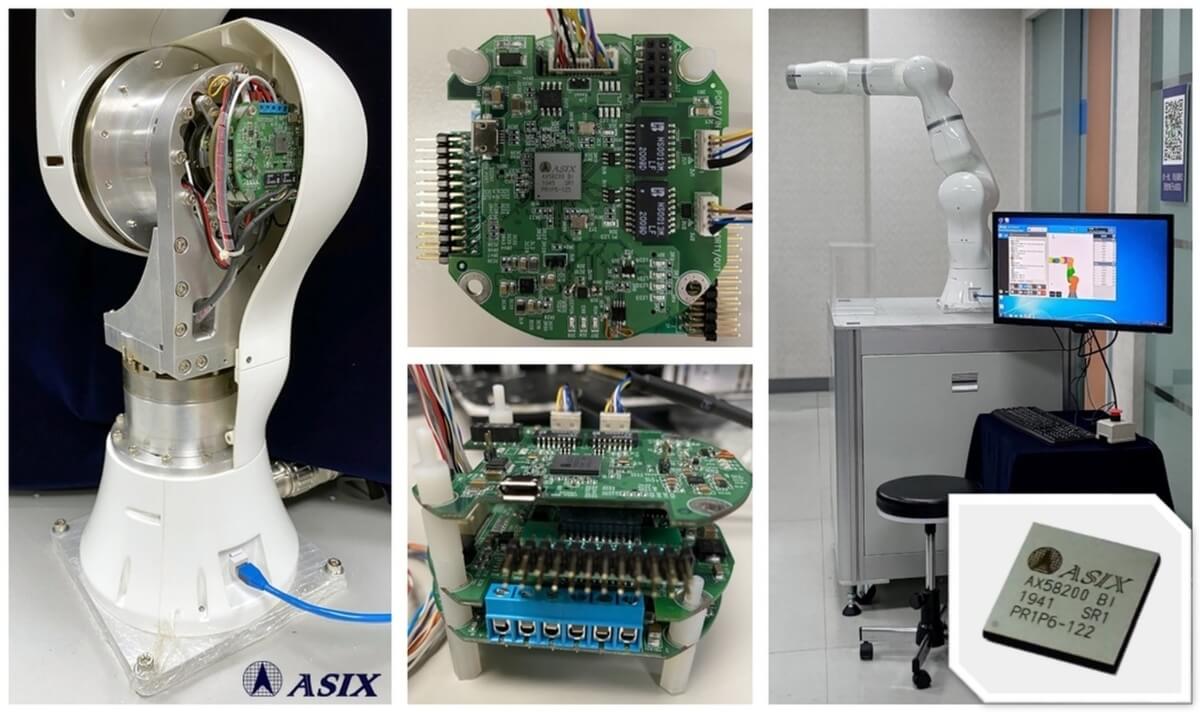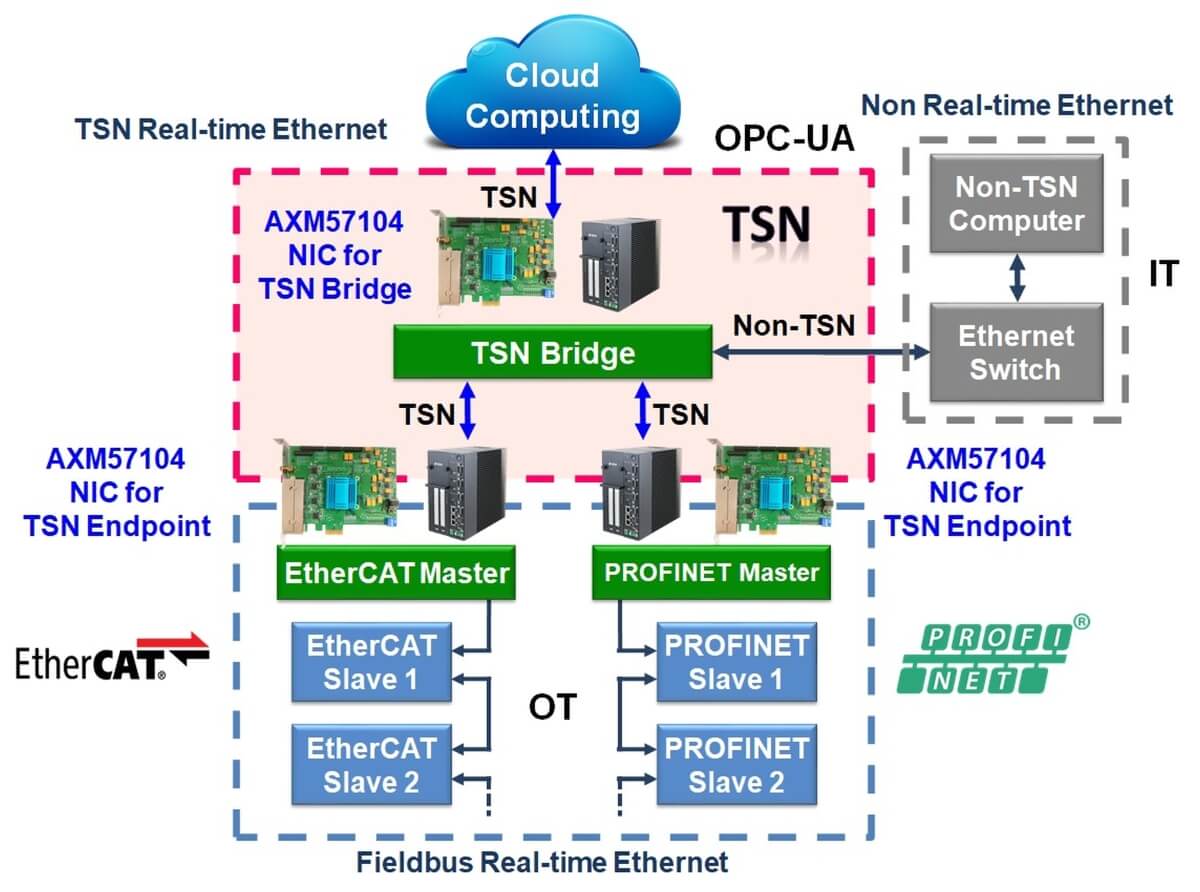Smart home, smart office, smart factory, smart city, smart transportation, etc., people can access Internet anytime, anywhere in the smart world, ASIX Electronics Corp. provides easy-to-design, cost-efficient industrial/embedded networking and I/O bridge controllers solutions for industrial automation and smart embedded devices applications.
Industrial/Embedded Networking and I/O Bridge Solutions in Smart World
Entering Smart World - Embedded Systems and Industrial Computers
Thanks to the popularity of smartphones, tablets and 4G/5G mobile networks, people can access Internet anytime, anywhere in the smart world. There are many smart embedded devices in our lives, such as smart TVs, smart speakers, smart home appliances, smart meters, set-top-boxes, multi-function printers, projectors, etc. These smart embedded devices are usually developed based on embedded systems with many benefits such as small in size, low-cost, power-efficient, etc.
In response to the huge impact of the COVID-19 pneumonia epidemic, global manufacturing industries have introduced new smart manufacturing ecosystems in succession to improve factory manufacturing efficiency and production quality. This trend has brought strong industrial computer market demands to global industrial equipment manufacturers. The industrial computers require to support multiple serial ports for communicating with traditional manufacturing machines via RS-232, RS-422 or RS-485 serial interfaces, and support real-time industrial Ethernet interfaces such as EtherCAT, PROFINET, EtherNet/IP, etc., in order to support deterministic and real-time communication between smart manufacturing machines and smart manufacturing ecosystems.

The Great Leap Forward in Computer Bus Technology
As computer technology changes continue to speed up, the computer bus technologies are also changing with each passing day. Since 1981, IBM PC introduced 8-bit ISA bus technology, with maximum throughput 8 MB/s and 98-pin pinout connector. The 32-bit PCI bus technology was introduced by PCI Special Interest Group in 1992, with maximum throughput 132 MB/s and 124-pin pinout connector. The computer bus technology was evolved to a new generation high-speed serial computer expansion bus standard – PCI Express 1.0 (officially abbreviated as PCIe or PCI-E) until 2013, which has simpler communication interface (with only 36 pins for X1 lane width slot, and 164 pins for X16 lane width slot) and higher data transfer throughput (500MB/s for bidirectional X1 lane width, and 8GB/s for bidirectional X16 lane width). Under the latest PCI Express 5.0 standard, the maximum throughput of bidirectional X16 lane width has been increased to 63GB/s. Compared to the traditional PCI interface, the PCIe peripheral products can support higher data transfer throughput under low pin count slot interface. That is why new computers don’t support built-in PCI slots any more now. The great leap forward in computer bus technology has become a powerful cornerstone of various computer peripheral technology innovations.
Portable computers, such as laptop/notebook/ultrabook/etc., emphasize portability, lightness, thinness, and power efficiency. Therefore, portable computers have been developed different computer expansion bus technologies. The 16-bit PCMCIA 1.0 card standard was introduced by PCMCIA Association in 1991, and then continuously evolved to 32-bit Cardbus and Express Card expansion slot technologies. These traditional expansion slot technologies can meet the basic peripheral expansion needs of portable computers. Following the innovation of expansion slot technology, a new generation USB 2.0 standard was introduced in 2000, which supports a very simple communication interface (just need 4 pins) and maximum throughput 480 Mbps. This is a significant innovation for portable computers to become thinner, lighter and more powerful. In fact, the PCMCIA/Cardbus/Express Card products had been replaced with the USB products for a long time. The latest USB 4.0 standard was introduced in 2019 and supports maximum throughput 40 Gbps by using the latest USB Type-C connector (with 24 pins). The USB (Universal Serial Bus) technology supports many convenient functions such as low pin count, hot-swap, plug & play, high-current quick charging, etc. It has been widely used in various computer peripherals, laptops, smart phones, tablets, handheld devices, smart network devices, etc. The USB technology has become one of the most important computer peripheral expansion bus technologies in the smart world now.

Industrial/Embedded Network and I/O Bridge Controllers
No matter desktop computers, portable computers, industrial computers, or ubiquitous smart network devices around life, they all need to support either wired or wireless network connection in order to support network access or remote control/monitor functionalities. Compared to wireless network connection, the wired network connection can provide more stable and faster network communication capabilities. Therefore, the main network interfaces for desktop computers, industrial computers and smart network devices in fixed locations are still used wired Ethernet connections.
ASIX Electronics Corporation is a leading IC design company for Industrial/Embedded networking and I/O connectivity solutions. ASIX introduced the first PCMCIA to fast Ethernet controller solution in 1998. With the development of computer bus technology, ASIX continues to introduce new Non-PCI/SPI embedded Ethernet controllers for embedded systems, Super-Speed USB Ethernet controllers for desktop/portable computers, and the latest industrial Ethernet controllers for industrial computers. ASIX Industrial Ethernet solutions include EtherCAT slave controllers and TSN Gigabit Ethernet PCIe NIC card. Except the industrial/embedded Ethernet controller solutions, ASIX also offers PCIe/USB to serial/parallel bridge controllers and RS-232/RS-485 UART transceivers solutions to meet the multiple serial ports requirements for industrial computers. These industrial/embedded network and I/O bridge controller solutions are suitable for computer peripherals, smart home, smart office, smart factory, industrial automation, and Industrial Internet of Things (IIoT), etc. applications.
PCIe/USB to Serial/Parallel I/O Bridge Controllers
Following the evolution of computer bus technology, the motherboards of new desktop/portable computers don’t support built-in serial port (COM) and parallel port (LPT) any more. In this case, if users still need to connect traditional serial/parallel devices such as printer, UART debug console of embedded systems, etc., they can easily support an extra serial/parallel port by installing a PCIe/USB to serial/parallel adapter onto these computers. For industrial computers, designers can also easily support multiple serial ports by connecting PCIe/USB to multiple serial ports solutions via PCIe or USB interfaces of industrial computers.
ASIX offers two interface I/O bridge controller solutions, one is AX99100 PCIe to Multi I/O (4S, 2S+1P, 2S+SPI, Local Bus) bridge controller solution, another one is AX781x0 family USB 2.0 to Multi I/O (4S, 2S+1P) bridge controller solution. The AX99100 PCIe bridge controller supports PCIe to multiple serial/parallel (4 Serials, 2 Serials + 1 Parallel), and also supports PCIe to SPI, GPIO, Local Bus (ISA), etc. I/O interfaces bridge functionalities for PCIe data acquisition and communication cards, PCIe video capture cards, etc. applications. The AX781x0 family USB 2.0 to Multi I/O bridge controller solution includes two USB bridge controllers, one is AX78140 for USB 2.0 to multiple serial/parallel (4 Serials, 2 Serials + 1 Parallel) applications; another one is AX78120 for USB 2.0 to multiple serial (2 Serials, 1 Serial) applications. Except the PCIe/USB to Multi I/O bridge controllers, ASIX also offers the RS-232/RS-485 UART transceiver solutions, which can be implemented with ASIX PCIe/USB to serial bridge controllers together.
Non-PCI/SPI Embedded Ethernet Controllers
An embedded system is a dedicated function computer system, which includes microcontroller (MCU), memory, input/output peripheral interfaces, timers, etc. Most of embedded system microcontrollers might only supports SPI/Local Bus/SRAM-like/etc. peripheral interfaces, but not support PCIe/PCI bus interfaces. In this case, designers can easily connect a Non-PCI/SPI embedded Ethernet controller via the SRAM-like or SPI interface of microcontroller to support Ethernet network connectivity on those embedded systems without built-in Ethernet interface.
ASIX offers the world's first AX88180 Non-PCI 32-bit Gigabit Ethernet controller, and AX88796C low-power Non-PCI/SPI Fast Ethernet controller for embedded system applications. These embedded Ethernet controller solutions are suitable for various embedded network devices, such as Set-Top Box (STB), smart TV, smart camera, multi-function printer, projector, etc.

Super-Speed USB Ethernet Controllers
Since Apple introduced the world’s thinnest notebook, MacBook Air in 2008, most of new laptops emphasized thin and light, and only support Wi-Fi interface for network connection. However, the Wi-Fi connection might be slow and unstable in some network environments. To improve this issue, users can easily install a USB Ethernet dongle or USB docking station on laptops to get a stable and fast wired network connection.
ASIX offers the world’s first single-chip AX88179 USB 3.0 to Gigabit Ethernet Controller solution, which integrates USB 3.0 physical layer, Gigabit Ethernet physical layer (PHY) and media access controller (MAC) in a single chip. This USB Ethernet controller solution is suitable for various computers, laptops, USB Ethernet dongle, USB docking station, smart phones, tablets, gaming consoles and smart network devices with standard USB ports.
Industrial Ethernet Controllers
The standard Ethernet with TCP/IP is not suitable for industrial automation applications because it is non-real-time and non-deterministic communication. In order to support real-time and deterministic industrial communications over Ethernet, the global industrial network manufacturers have developed different industrial Ethernet solutions, such as EtherCAT, PROFINET, EtherNet/IP, Modbus TCP, POWERLINK, SERCOS, CC-Link IE, etc. These industrial Ethernet solutions can solve the non-deterministic communication issues of standard Ethernet, and have been practiced on respective isolated industrial Ethernet networks in smart factory.
Response to the rapidly growing global smart manufacturing market demand, ASIX offers AX58x00 family EtherCAT slave controller/SoC solutions and AXM57104 Quad Port TSN Gigabit Ethernet PCIe NIC Card solution to provide designers easy-to-design and cost-efficient industrial Ethernet solutions for smart factory, industrial automation, Industrial IoT (IIoT) applications.

Ethernet for Control Automation Technology (EtherCAT)
EtherCAT (Ethernet for Control Automation Technology) is an open hard-real-time industrial Ethernet technology standard, originally developed by Beckhoff Automation. The EtherCAT Technology Group (ETG) was founded in 2003 and has quickly grown into the world's largest industrial Ethernet and fieldbus organization. EtherCAT technology uses unique "Processing on the fly" data exchange mechanism to realize hard-real-time and deterministic industrial communications over Ethernet. The main advantages of EtherCAT technology are very short cycle times (≤ 100 µs), very low jitter for accurate synchronization (≤ 1 µs), flexible network topologies (linear, tree, star and daisy-chain) and low hardware costs, etc.
AX58x00 family EtherCAT slave controllers are easy-to-design, cost-effective industrial Ethernet EtherCAT slave solutions. AX58100 is a 2/3-port EtherCAT Slave Controller, which integrates two embedded Fast Ethernet PHYs and supports some additional interfaces such as Pulse Width Modulation (PWM), Incremental (ABZ)/Hall Encoder, SPI master, 32 Digital I/O, Emergency Stop Input, etc. for designers to easily implement AX58100 on different EtherCAT industrial fieldbus applications without extra microprocessor. The AX58100 also supports SPI slave and Local bus Process Data Interfaces (PDI) to provide an easy way for system designers to implement the standard EtherCAT communication functionalities on those traditional non-EtherCAT MCU and DSP industrial platforms.
AX58200 is a 2/3-port EtherCAT Slave Controller SoC, which is equipped with ARM® Cortex®-M4F core with DSP extension runs up to 192 MHz and EtherCAT Slave Controller with two integrated Fast Ethernet PHYs. The AX58200 also supports additional communication interfaces such as 10/100Mbps Ethernet MAC with RMII, HS USB OTG, SPI/UART/I2C/I2S/CAN/PWM, hardware cryptography accelerator, etc. AX58x00 family EtherCAT slave controller/SoC solutions are suitable for motor/motion control, digital I/O control, sensors data acquisition, robotics, EtherCAT to IO-Link master gateway, EtherCAT junction slave module, etc. industrial automation fieldbus applications.
In response to the global manufacturing industry’s market demand for Human-Robot Collaboration (HRC) industrial automation, ASIX introduces a cost-efficient AxRobot EtherCAT 7-Axis Force-Assisted Control Robot solution based on AX58200 EtherCAT slave controller SoC. Designers can easily evaluate the AxRobot software force-assisted control robot functionalities by using AxRobot Controller worked as EtherCAT master and AxRobot EtherCAT 7-Axis Force-Assisted Control Robot with seven AxRobot servo drive modules worked as EtherCAT slave devices. This solution is suitable for smart manufacturing collaborative robot applications. This AxRobot solution uses AxRobot servo drive modular design with AX58200 EtherCAT slave controller SoC to effectively reduce the motor drive board PCB space and hardware design cost for each robotic arm joint. Using EtherCAT Daisy-Chain network topology technology to communicate between AxRobot controller and AxRobot servo drive modules, all robotic arm joints can be easily wired together in sequence. It provides the simplest network wiring in each robotic arm joint and reduces the difficulty of equipment maintenance.

Time Sensitive Network (TSN)
For ideal Industry 4.0 smart manufacturing ecosystems, the smart factory cloud server should be able to collect and analyze all ecosystem information, such as engineering design sub-system, factory manufacturing sub-system, stocks and supply chain sub-system, etc. so manufacturers can maintain the engineering design, factory manufacturing, stocks and supply chains, etc. resources based the real customer demands more efficiently. To reach these requirements, manufacturers need converge the non-real-time IT (Information Technology) networks and real-time OT (Operation Technology) networks into a single network. It is hard for the traditional industrial Ethernet solutions, but the new generation industrial Ethernet, Time Sensitive Networking (TSN) technology can easily converge the IT and OT networks with real-time, deterministic, security communications.
AXM57104 is a cost-efficient Quad Port TSN Gigabit Ethernet PCIe NIC Card solution, which supports enhanced TSN functions included the timing and synchronization compliant to IEEE 802.1AS-Rev/AS and IEEE 1588V2, the Forwarding and Queuing of Time Sensitive Streams (FQTSS): Specifies Credit-Based Shaper (CBS) compliant to IEEE 802.1Qav, the Time-Aware Shaper (TAS) compliant to IEEE 802.1Qbv, and the Per-Stream Filtering and Policing (PSFP) compliant to IEEE 802.1Qci. AXM57104 also supports 32 synchronous I/O pins, one Pulse Per Second (PPS) output and FPGA hard-core field upgradable via In Application Programming (IAP) for TSN standards evolution. To enable TSN functions on existing industrial computers, ASIX AXM57104 Quad Port TSN Gigabit Ethernet PCIe NIC Card solution provides an easy way to evaluate TSN functionalities on industrial Linux platforms.
Conclusion
Smart home, smart office, smart factory, smart city, smart transportation, etc., people can access Internet anytime, anywhere in the smart world, ASIX Electronics Corp. provides easy-to-design, cost-efficient industrial/embedded networking and I/O bridge controllers solutions for computer peripherals, smart home, smart office, smart network devices and smart factory industrial automation applications. Following the continuous evolutions of computer peripherals and industrial automation technologies, ASIX will continue to bring breakthrough and innovative technologies to face the market challenges, and become the business & technology decision-maker that has the power to innovate and keep up with the trend of the times.
- 01
Industrial Ethernet ICs
EtherCAT slave controller/SoC and TSN NIC solutions for smart factory, industrial automation and industrial IoT
- 02
USB Ethernet ICs
Super Speed/High Speed USB to 10/100/1000Mbps Gigabit Ethernet Solutions for Smart Home & Office
- 03
Embedded Ethernet ICs
Non-PCI/SRAM-Like/Local Bus/SPI Embedded Ethernet Controllers
- 04
Interface
ASIX IO-Link master/device software stacks and PCIe/USB to serial/parallel bridge solutions
- 05
UART Transceivers
5V/3V RS-232/RS-422/RS-485 UART transceivers solutions for industrial computers, embedded systems.